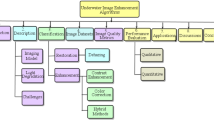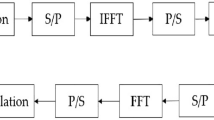Abstract
Underwater non-stationary acoustic signal detection has a variety of applied research in marine, military and civilian fields. Moreover, the signal has strong randomness and short-term characteristics. Usually, the background noise sources of the actual signal detection environment have diversity and complexity. In the marine environment, signal detection methods like the short-time Fourier transform (STFT) may encounter uncertainties and limitations when dealing with unknown interferences such as Gaussian white noise and colored noise. In order to suppress marine background noise and obtain the best signal-to-noise ratio (SNR) for underwater acoustic observation signals detected in the frequency domain, this paper proposes a noise suppression detection and analysis method that combines short-term signal stabilization and higher-order cumulants. Through marine environment simulation and comparison experiments, the noise suppression effect of short-term higher-order cumulants (STHOCs) on Gaussian background noise under different SNR conditions and the performance improvement to signal frequency-domain (Fre-SNR) is analyzed. The processing results of experimental case data show that the frequency-domain noise energy standard deviation (Fre-STD) of the target signal is reduced. Compared to the STFT algorithm, the STHOC algorithm exhibits enhanced noise suppression and signal detection capabilities for target signals B and C. Finally, building upon the aforementioned analysis, the efficacy and superiority of the STHOC in detecting non-stationary underwater acoustic signals are further substantiated.








Similar content being viewed by others
References
Vijaya Baskar, V.; Rajendran, V.; Logashanmugam, E.: Study of different denoising methods for underwater acoustic signal. J. Mar. Sci. Technol. 23, 414–419 (2015). https://doi.org/10.6119/JMST-014-0506-1
Viana, N.; Guedes, P.; Machado, D.; Pedrosa, D.; Dias, A.; Almeida, J.M.; Martins, A.; Silva, E.: Underwater acoustic signal detection and identification study for acoustic tracking applications. In: OCEANS 2018 MTS/IEEE Charleston. pp. 1–7 (2018)
Estrada, R.F.; Starr, E.A.: 50 years of acoustic signal processing for detection: coping with the digital revolution. IEEE Ann. Hist. Comput. 27, 65–78 (2005). https://doi.org/10.1109/MAHC.2005.16
Luo, J.; Han, Y.; Fan, L.: Underwater acoustic target tracking: a review. Sensors (Switzerland) (2018). https://doi.org/10.3390/s18010112
Rui-Chao, X.; Fu-Qiang, N.; Yan-Ming, Y.; Yue-Kun, H.; Wei, L.: Study on automatic extraction of bottlenose dolphin whistles from the background of ocean noise. Recent Dev. Inf. Commun. Technol. Eng. Meen. (2019). https://doi.org/10.35745/icice2018v2.032
Jiang, Y.; Lü, L.-G.; Liu, Z.; Yang, C.; Guo, J.: Identification of Antarctic minke and killer whales with passive acoustic monitoring in Prydz Bay, Antarctica. J. Oceanol. Limnol. (2021). https://doi.org/10.1007/s00343-021-1017-x
Chitre, M.; Shahabudeen, S.; Stojanovic, M.: Underwater acoustic communications and networking: recent advances and future challenges. Mar. Technol. Soc. J. 42, 103–116 (2008). https://doi.org/10.4031/002533208786861263
Mercer, J.A.; Colosi, J.A.; Howe, B.M.; Dzieciuch, M.A.; Stephen, R.; Worcester, P.F.: LOAPEX: the long-range ocean acoustic propagation experiment. IEEE J. Ocean. Eng. 34, 1–11 (2009). https://doi.org/10.1109/JOE.2008.2010656
Xie, Q.; Wu, Z.; Ban, Y.; Fu, X.; Cao, Z.; Sun, W.; Chen, B.: The experimental investigation on progressive deformation of shear slip surface based on acoustic emission measurements. Arab. J. Sci. Eng. 47, 5125–5138 (2022). https://doi.org/10.1007/s13369-021-06454-1
Singh, R.; Puri, H.; Aggarwal, N.; Gupta, V.: An efficient language-independent acoustic emotion classification system. Arab. J. Sci. Eng. 45, 3111–3121 (2020). https://doi.org/10.1007/s13369-019-04293-9
Groutage, D.: The analysis of under water vehicle non-stationary acoustic transient signals using a new fast algorithm for constructing positive time–frequency distributions. Multidimens. Syst. Signal Process. 9, 383–389 (1998). https://doi.org/10.1023/A:1008458323991
Peng, Y.; Chen, K.; Huang, W.; Xiao, X.; He, J.; Xiao, K.: Analysis of denoising methods of underwater acoustic pulse signal based on wavelet and wavelet packet. IOP Conf. Ser. Earth Environ. Sci. (2021). https://doi.org/10.1088/1755-1315/781/3/032041
Ding, W.; Li, J.; Wu, Z.; Li, S.; Lin, X.: Late Mesozoic transition from andean-type to western pacific-type of the East China continental margin: Is the East China Sea basement an allochthonous terrain? Geol. J. 53, 1994–2002 (2018). https://doi.org/10.1002/gj.3029
Gola, K.K.; Gupta, B.: Underwater acoustic sensor networks: an energy efficient and void avoidance routing based on grey wolf optimization algorithm. Arab. J. Sci. Eng. 46, 3939–3954 (2021). https://doi.org/10.1007/s13369-020-05323-7
Al-Aboosi, Y.Y.; Sha’ameri, A.Z.; Sallomi, A.H.: Enhancement signal detection in underwater acoustic noise using level dependent estimation time-frequency de-noising technique. J. Mar. Eng. Technol. 19, 1–14 (2020). https://doi.org/10.1080/20464177.2018.1508810
Delory, E.; Potter, J.R.: Signal processing aspects of signal detection masking and noise suppression. Acoust. Vib. Asia 98, 291–300 (1998)
Flandrin, P.; Gonçalvès, P.; Rilling, G.: Detrending and denoising with empirical mode decompositions. In: 2004 12th European Signal Processing Conference. pp. 1581–1584 (2004)
Naveed, K.; Akhtar, M.T.; Siddiqui, M.F.; ur Rehman, N.: A statistical approach to signal denoising based on data-driven multiscale representation. Digit. Signal Process. A Rev. J. 108, 1–14 (2021). https://doi.org/10.1016/j.dsp.2020.102896
Sanaullah, M.: A review of higher order statistics and spectra in communication systems. Glob. J. Sci. Front. Res. 13, 31–50 (2013). https://doi.org/10.34257/gjsfravol13is4pg31
Anjos, A.A.D.; Marins, T.R.R.; Silva, C.R.N.D.; Peñarrocha, V.M.R.; Rubio, L.; Reig, J.; Souza, R.A.A.D.; Yacoub, M.D.: Higher Order statistics in a mmwave propagation environment. IEEE Access 7, 103876–103892 (2019). https://doi.org/10.1109/ACCESS.2019.2930931
Iglesias Martínez, M.E.; Antonino-Daviu, J.A.; de Córdoba, P.F.; Conejero, J.A.: Higher-order spectral analysis of stray flux signals for faults detection in induction motors. Appl. Math. Nonlinear Sci. 5, 1–14 (2020). https://doi.org/10.2478/amns.2020.1.00032
Duddu, S.K.; Kumar, J.: High-gain series-fed-planar millimetre-wave Franklin antenna array. Arab. J. Sci. Eng. (2023). https://doi.org/10.1007/s13369-023-08243-4
Rahim, V.C.A.; Prema, S.C.: A highly controllable cooperative automatic modulation classification. Wirel. Pers. Commun. 131, 2081–2092 (2023). https://doi.org/10.1007/s11277-023-10533-x
Almomani, B.; Syarif, J.; Chang, Y.: Advancements in nuclear energy systems a representative volume element model for investigating the hydride inclusion effect on ductility of zry-based nuclear fuel cladding. Arab. J. Sci. Eng. (2023). https://doi.org/10.1007/s13369-023-08264-z
Amale, V.S.; Kolhar, S.U.; Shastri, R.K.; Das, A.: Non-gaussianity and non-stationarity detection in underwater ambient noise using hypothetical tests. In: 2016 Conference on Advances in Signal Processing (CASP). pp. 270–275 (2016)
Liu, X.; Bai, X.; Wang, D.: Multi-fold high-order cumulants based CFAR detector for radar weak target detection. Digit. Signal Process. A Rev. J. 139, 104076 (2023). https://doi.org/10.1016/j.dsp.2023.104076
Yang, Z.; Shen, Q.; Liu, W.; Eldar, Y.C.; Cui, W.: High-order cumulants based sparse array design via fractal geometries: Part II—Robustness and mutual coupling. IEEE Trans. Signal Process. 71, 343–357 (2023). https://doi.org/10.1109/TSP.2023.3244667
Yang, Z.; Shen, Q.; Liu, W.; Eldar, Y.C.; Cui, W.: High-order cumulants based sparse array design via fractal geometries: Part I—Structures and DOFs. IEEE Trans. Signal Process. 71, 327–342 (2023). https://doi.org/10.1109/TSP.2023.3244672
Acknowledgements
This research was financially supported by Science and Technology Innovation Plan of Shanghai Science and Technology Commission (Grant No. 22dz1204000).
Author information
Authors and Affiliations
Contributions
Bo Shi contributed to conceptualization, methodology, investigation, resources, and writing—original draft. Tianyu Cao contributed to methodology, project administration, validation, visualization, and writing—review and editing. Qiqi Ge contributed to methodology, investigation, supervision, and funding acquisition. Zitao Wang contributed to methodology, investigation, and validation. Wenbo Guo contributed to resources, investigation, and validation.
Corresponding author
Ethics declarations
Conflict of interest
The authors declare that they have no known competing financial interests or personal relationships that could have appeared to influence the work reported in this paper.
Appendix
Appendix







Rights and permissions
Springer Nature or its licensor (e.g. a society or other partner) holds exclusive rights to this article under a publishing agreement with the author(s) or other rightsholder(s); author self-archiving of the accepted manuscript version of this article is solely governed by the terms of such publishing agreement and applicable law.
About this article
Cite this article
Shi, B., Cao, T., Ge, Q. et al. Underwater Non-stationary Acoustic Signal Detection Based on the STHOC Noise Suppression. Arab J Sci Eng (2024). https://doi.org/10.1007/s13369-024-09073-8
Received:
Accepted:
Published:
DOI: https://doi.org/10.1007/s13369-024-09073-8




